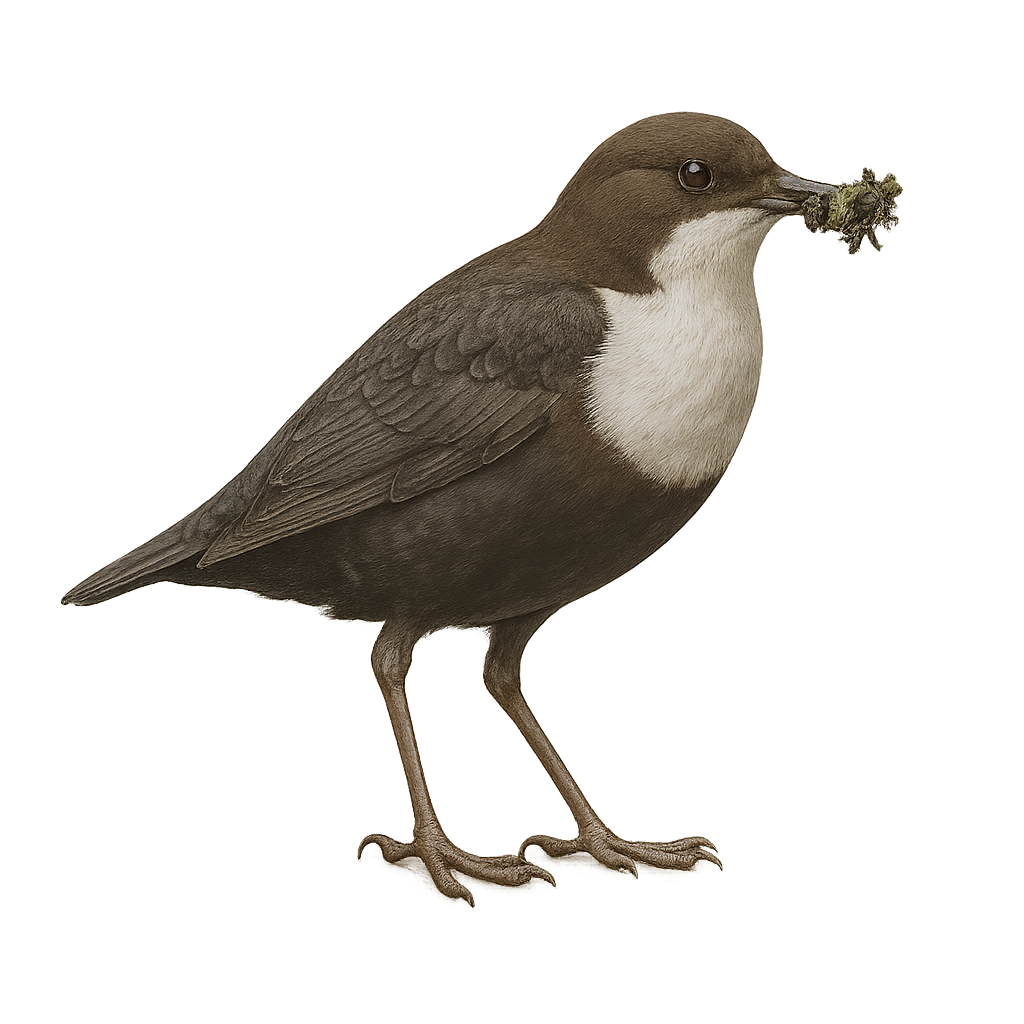Your wildlife photography guide.
Explore the white-throated dipper in detail, study its behavior, prepare your shots.
Where to observe and photograph the white-throated dipper in the wild
Learn where and when to spot the white-throated dipper in the wild, how to identify the species based on distinctive features, and what natural environments it inhabits. The WildlifePhotographer app offers tailored photography tips that reflect the white-throated dipper’s behavior, helping you capture better wildlife images. Explore the full species profile for key information including description, habitat, active periods, and approach techniques.
White-throated Dipper
Scientific name: Cinclus cinclus

IUCN Status: Least Concern
Family: CINCLIDAE
Group: Birds
Sensitivity to human approach: Suspicious
Minimum approach distance: 20 m
Courtship display: February to April
Incubation: 16-18 jours
Hatchings: April to May
Habitat:
Rivers and rocky areas
Activity period :
Primarily active during the day, with peak activity in the morning and late afternoon.
Identification and description:
The White-throated Dipper is a small aquatic bird, easily recognized by its dark plumage, compact body, and characteristic posture, often seen bobbing on rocks at the edge of streams. It has brownish plumage on its back and a white chest, with a short, powerful beak. This small bird is perfectly adapted to aquatic life, thanks to its webbed feet that allow it to swim and dive underwater in search of food.
The White-throated Dipper primarily feeds on aquatic insects, larvae, and small fish, which it captures by diving into rivers and streams. It is capable of swimming underwater and moving along the riverbed to search for prey. Although this bird is generally solitary, it can be observed in clear river or stream habitats, primarily in Europe and Asia. While it is generally not threatened, it can be impacted by water pollution and the disruption of its natural habitats.
Recommended lens:
400 mm – adjust based on distance, desired framing (portrait or habitat), and approach conditions.
Photography tips:
Use a telephoto lens to capture images from a distance, respecting the discreet nature of the species.
Photograph at sunrise or sunset, when the soft light highlights the dipper’s plumage.
Look for it along fast-flowing rivers, especially in mountainous areas, where it feeds on aquatic insects and small invertebrates.
Be patient and discreet to avoid disturbing its natural behavior.
The White-throated Dipper is classified as Least Concern by the IUCN. It is essential to respect its natural habitat and minimize human disturbance.
The WildlifePhotographer App is coming soon!
Be the first to explore the best nature spots, track rutting seasons, log your observations, and observe more wildlife.
Already 1 432 wildlife lovers subscribed worldwide

